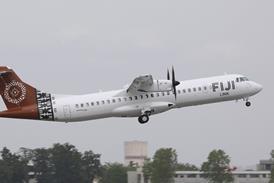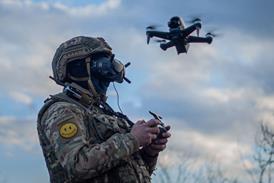Like large tracts of Asia, cloaked in the fog from forest fires, India's aviation policies are often hard to distinguish through the constant haze of uncertainty and change.
The saga of the proposed Tata-Singapore Airlines domestic startup joint venture is just one example of the on-again, off-again politics of India.
SIA, which plans a 40 per cent stake in the newcomer, and its would-be Indian partner, have lobbied for clearance for the venture for two years while a bitter political battle has taken place behind the scenes.
Local private airlines opposed it because of the competitive threat. Prime minister I K Gujral was in favour, believing it would lift standards, but civil aviation minister C M Ibrahim publicly stated his opposition on numerous occasions. 'Believe me, with conflicting public statements coming from every angle within government, even we didn't really know what was going on,' comments one bemused aviation department official.
As 1997 drew to a close and the government remained in virtual suspension pending elections, the deal was definitely off. But no-one in India will be surprised if it is back on the agenda again this year.
Frequent policy reversals have been part of life ever since liberalisation took off in 1986, with the launch of scheduled services by new startup carriers from 1992. As a result it is difficult to find anyone who will say deregulation has been a success. Far from being an open skies environment, carriers continue to be subjected to government regulations, including new taxes and increased charges for aviation services.The result is an industry characterised by financial instability and low traffic growth.
'There has been no shortage of new entrants willing to add capacity into a system where supply-side constraints are regarded as the main impediment to a boom in airline travel,' says Indian aviation expert associate professor Paul Hooper, head of the Institute of Transport Studies at Sydney University. 'However, many of these new ventures have failed within a few years and the remaining carriers, including Indian Airlines, have had to increase fares in an attempt to improve their financial performance.'
With an emerging middle class of at least 200 million, the combined impact of higher incomes and lower fares was initially expected to yield domestic traffic growth of 9.7 per cent a year up to 2001. But Indian Airlines' traffic increased by only 0.9 per cent a year between 1982 and 1996. Though they won't say so publicly, Indian Airlines' managers clearly of think open skies is a joke.
As many as 20 private airlines were granted licences after India liberalised in 1992 but most have fallen by the wayside, largely due to the high taxes on domestic aviation fuel. Congestion and insufficient access to suitable airport terminal facilities also caused problems.
The startups were also forced to pay exorbitant salaries to lure pilots away from Indian Airlines and capital reserves were, in most cases, extremely low. The average return on investment was barely 3-5 per cent and instead of dropping, as government had planned, fares increased.
The International Air Transport Association is also concerned about India's liberalisation policies. Director general Pierre Jeanniot met with government officials in New Delhi late last year to ask them to reduce the tax burden on the aviation sector and help the industry grow. 'Travel is no longer a luxury - do not tax it like you do cigarettes as excessive taxation will only kill the industry,' he told them.
Among the airlines to have ceased operations in the past three years are Modiluft, East West Airlines, Damania Airways, NEPC Skyline and UB Airways.
The latest casualty was NEPC Skyline, which had taken over Damania in 1995. It halted flights after the Indian Oil Corporation impounded its aircraft for non-payment of dues.
Modiluft closed after failing to meet financial obligations to lessors and its technical partner, Lufthansa. East West, which did make $228 million in profits during its 1992-1996 operations, collapsed after its managing director was shot dead, allegedly by gangsters, in Mumbai.
Stronger survivors
The strongest of the survivors are Jet Airways and Sahara India Airlines, which have domestic market shares of 15 per cent and 7.3 per cent respectively. One Jet official says the main reasons its competitors disappeared were poor management and lack of sufficient funds.
But even Jet hasn't escaped the impact of regulatory dithering. Its former Middle East shareholders, Kuwait Airways and Gulf Air, which each held 40 per cent of its stock, were forced to sell out to controlling stockholder and chairman, Naresh Goyal, because of a ban on any foreign airline equity.
That is not all airline owners have had to cope with. A former manager of East West says vested interests caused the government to favour certain airlines over others, a claim not uncommon in aviation circles.
Ironically, while turmoil has ruled the airline industry in recent years, it appears a second cycle of expansion and new startups - or revival of old startups - is underway.
Mumbai-based Jet Airways has firmly established itself as the independent front runner in India's skies and operates 16 Boeing 737s to 20 destinations, including a -400 series jet delivered in November, the first aircraft it has owned outright.Three more will be added to the fleet in March 1998 and Jet also has six 737-800s on order, to be delivered by 2000. The new aircraft should help the carrier achieve its goal of 20 per cent domestic market share by the end of 1998.
Chairman Naresh Goyal says of the $375 million funding required for the -400 and -800 series aircraft, that 85 per cent has been financed by the US Exim Bank and 15 per cent by ANZ Grindlays and Barclays Bank. 'This is the first time that Exim Bank has financed a private company in India without any government guarantee,' he says.
Goyal adds the carrier is studying a 50-70 seater aircraft to broaden its operations by starting feeder services to boost its domestic presence. Its ambitions don't stop there. It has begun the process of seeking permission to fly internationally, looking at routes to Malaysia, Indonesia and Singapore.
New Delhi-based Sahara India Airlines is smaller than Jet, operating five 737s to 18 destinations with plans to add another 12. But it plans to add two more 737s and five turboprops in 1998 and is backed by a group of industrialists known as the Shara group.
Meanwhile East West has announced plans to relaunch. It hoped to be back in the air by January and a spokesman says its licence has been renewed after a strengthening of the capital base. 'We have worked out a revival plan and hope to be operating with five B737-400s by March,' he said.
Also set for revival is ModiLuft. British Airways signed an agreement in October with India's Modi Group to provide the carrier with managerial and technical assistance and BA was to send three executives to India to help relaunch the airline. As previously, the chairman will be S K Modi, while the managing director will be from BA. At presstime 737-200, 300 and 400 aircraft were being considered and a lease arrangement was due to be finalised in December.
Another newcomer may be launched by one of India's largest clothing suppliers, Raymond Ltd. The firm operates a helicopter air-taxi service called Millionaire and Raymond head Vijaypat Singhania plans to acquire passenger jets to operate regular airline services.
Proposed changes to aviation policy - if given the go ahead - will help established carriers but could also hinder prospective new entrants.
If adopted, the policy will allow up to 100 per cent foreign ownership of airports, in order to encourage foreign investment and speed up infrastructure improvement, a move which should benefit all operators.
Airline policy, however, is currently expected to bar foreign airline ownership of any part of an Indian operator, or even the provision of technical assistance, though it is not known whether the latter would be retroactive. This will make it extremely difficult for new entrants, many of which would need offshore help, at least in technical matters, to operate successfully.
There is also expected to be a lower limit of five aircraft for any newcomer, as well as minimum capital requirements and a rule that airlines should own at least one fifth of their fleet. This should eliminate the financial problems carriers have faced on entering the market.
Airline officials say plenty of money has been pumped into India's infrastructure requirements in the past but that civil aviation has been largely ignored.
The proposed new airport policy, allowing for unlimited foreign investment, should reverse that trend, with the new civil aviation policy bringing added stability. 'The new civil aviation policy will really answer all the queries and take Indian aviation to much greater heights in the next few years,' says one airline manager. While independents like Jet and Sahara may not support all the measures proposed, above all they want definite decisions to eliminate the current chopping and changing in policy.
'There's no denying the fact that we would much rather have had something done five years ago and then we would have been reaping the advantage now. But it's better late than never. We are now set on the right track,' says the airline manager.
Provided, of course, the necessary policies are approved by a new Indian government.
Source: Airline Business























